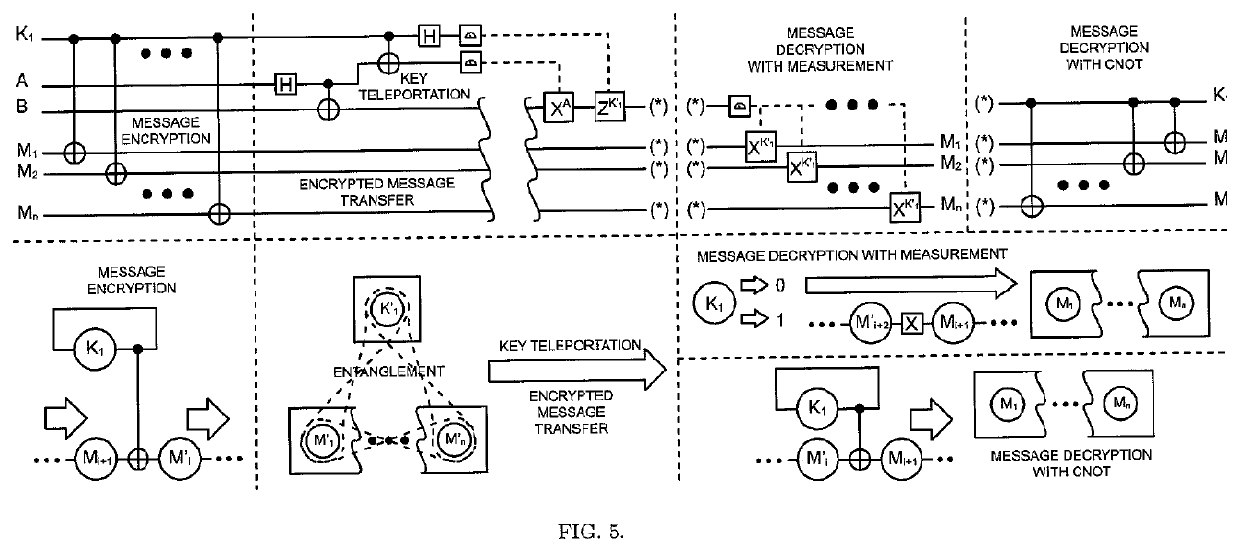The One-Qubit Pad (OQP) for entanglement encryption of quantum information
a quantum information and encryption technology, applied in quantum computers, computing models, transmission, etc., can solve the problems of not offering the level of unconditional or absolute (i.e. information-theoretic) security, public-key cryptography, and no way to compute what was the original message, etc., and achieve the effect of fully computationally conditioned
- Summary
- Abstract
- Description
- Claims
- Application Information
AI Technical Summary
Benefits of technology
Problems solved by technology
Method used
Image
Examples
Embodiment Construction
[0064]The invention consisting of technical generic device implementing the proposed OQP protocol will use the following components: already maturing in the current-state-of-the-art implemented technically CNOT gates and related to their implementation, implementations of qubits themselves and their quantum channels. The CNOT gates and related to their definitions qubits are implemented for many years (cf. e.g. [15-29]). Building of the generic device implementing the OQP protocol can be realized on any technological implementation of qubits and their CNOT operations and is currently achievable technologically. While the qubits and CNOT gates are basic components of the OQP device, the invention doesn't depend on particular implementation technology used for quantum information carriers (qubits) and interactions between the qubits carriers (implementing CNOT gates). These can be realized in the regimes of orbital or spin degrees of freedom in matter or with polarization or phase deg...
PUM
 Login to View More
Login to View More Abstract
Description
Claims
Application Information
 Login to View More
Login to View More - R&D
- Intellectual Property
- Life Sciences
- Materials
- Tech Scout
- Unparalleled Data Quality
- Higher Quality Content
- 60% Fewer Hallucinations
Browse by: Latest US Patents, China's latest patents, Technical Efficacy Thesaurus, Application Domain, Technology Topic, Popular Technical Reports.
© 2025 PatSnap. All rights reserved.Legal|Privacy policy|Modern Slavery Act Transparency Statement|Sitemap|About US| Contact US: help@patsnap.com


